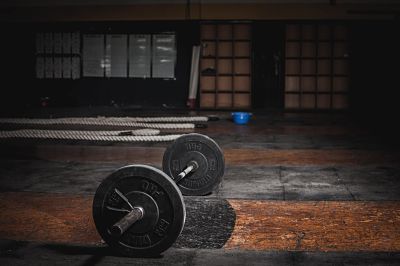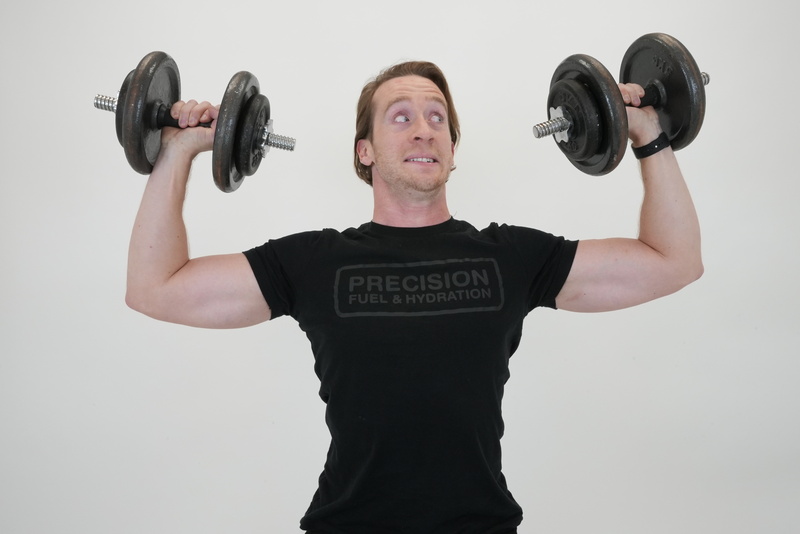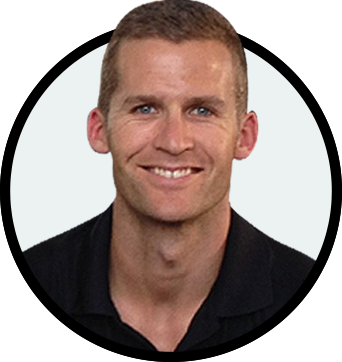We asked Strength For Endurance's Head Coach, Kriss Hendy, to share the most common questions he hears from endurance athletes who are looking to introduce strength training into their programme...
1. What are the best exercises to do?
It’s all too common to lean into ‘the three best exercises for running’ or ‘the top five movements for cycling’. But, this type of mindset often leaves you neglecting key areas that are important to you as an individual. The true answer to this first question is based upon your goals, previous training experience and injury history.
To give you a little more to work with, the essential ingredients of an effective strength programme would include:
- Compound Lower Body (squat or deadlift)
- Compound Upper Body (push, pull or press)
- Unilateral Upper and Lower Body
- Plyometrics
- Posterior Chain
- Below the Knee
A strength and movement analysis or pre-screening process is a fundamental component when embarking on any new program, to give you a clear picture of where you currently are and what you need to work on.

2. What are plyometrics?
Plyometrics are one of the simplest methods (when prescribed appropriately) to develop real levels of resilience in your bones and tendons.
As we age, we're all guilty of losing the ability to absorb force and impact through our bodies. Plyometric training is our modern day method of acclimatising our body to the types of stresses you’d experience out doing your sport, but in a controlled environment.
The body's inability to manage impact is why so many runners struggle with recurrent injuries. Their body simply cannot tolerate these forces, which is why it’s absolutely critical that you integrate plyometrics into your training.
3. How do I get over ‘X’ injury?
First off it's important to get professional clarity on what you’re working with (i.e. through a professional analysis). When you’re looking to solve a particular injury, it's too easy to focus solely on the site of pain or symptoms. But to prevent the issue from recurring we want to solve the why behind the symptoms. What were the reasons for it happening in the first place?
This is why a movement analysis and strength test is something we value greatly at Strength For Endurance as it will likely highlight weaknesses that otherwise might not have be considered by the individual. Obviously for those athletes with a current injury we need to respect pain and potential limitations when carrying out any testing.
4. When should I fit strength training into my weekly plan?
Simply put, the best time to strength train is when you're neurologically and mentally fresh.
Whether you're new to strength training or very experienced, to get the full benefits of your strength sessions and to prevent the likelihood of injury, you want to allocate quality time for these strength sessions into your schedule.
There are a number of ways that you can integrate it into your week. Alternating days is a great place to start, as this gives you quality time to recover in between sessions. If you have a higher volume training program then look to 'top and tail' your days (i.e. run or ride in the morning, strength train in the evening or vice versa).
But an important note is to focus on managing your overall training load across the week. Ideally we’re looking to spread the maximal strength sessions and harder interval sessions across the week with appropriate rest in between, to allow your body to maximise the training effects and prevent overtraining.
5. How strong do I need to be?
Strong enough to meet the demands and stresses of the sports that you perform.
If you're regularly ‘blowing up’ or getting injured, your body is telling you that you're lacking the depth of strength and conditioning in your joints, tendons, ligaments and major muscle groups to meet the demands.

As an endurance athlete you should be able to move your bodyweight for fun. Whether you like to run, ride, swim, hike, paddle or ski, if you have any significant weaknesses they will become exposed in these activities.
Here are a few examples of the type of strength you should be aiming for: to lift your own bodyweight, jump your own body height (horizontally), perform 20+ reps (each leg) with any bodyweight single leg exercise or hold a plank for 3+ minutes.
6. Do I need to be training in the gym?
No. However, you do need to be training to a standard that challenges you and creates enough training stimulus that emulates the forces, impacts and endurance in your joints and muscle tissues that you’d experience on the bike, in the water or out on the trails.
As a result you'll need to be training with significant loads in proportion to and often close to your bodyweight. Notably, 60-70% of our clients here at SFE train from home, with as much success and consistency as those training from a commercial gym space.
7. How do I prevent muscle soreness that stops me from being able to run and ride?
The most important factor when it comes to muscle soreness is respecting your own individual threshold for training.
Whenever we do anything new, we're always looking to minimise the ‘shock’ factor to our bodies and allow ourselves a period of time for our body to adjust to the new intensity, movement or load.
This means you want to manage the intensity of your sessions in the first few weeks, potentially keeping your efforts to a 6 or 7 out of 10, with more focus on quality of movement and great technique.
We can then progressively increase the intensity over time, ideally adjusting reps and sets first before adding more load. Depending on the exercise, when load is added, we like to keep it to around 2-5% weight increases at any given time.
8. How often and how long do my strength sessions need to be?
For any significant change in strength, power or endurance we need to be training at least 2-3 times a week. If you have multiple areas of focus or weakness then this will also determine how long your sessions are.
Ideally we're looking to work for 30-60 minute sessions but as your experience increases and the complexity of your exercises evolve, these sessions will naturally have to adjust. However, the focus should still be quality over quantity for best results.
Further reading
- Should strength training be part of your training routine?
- How to start strength training for endurance
- How often should endurance athletes be strength training?
—--------------
Want to know more about training with Strength For Endurance? SFE aim to help you to build the strength and resilience to take on your ultimate endurance goals.
The SFE Athlete Pathway is for endurance athletes of all levels, with one common desire - to keep doing what they love. If you’re interested in our 14 week Athlete Pathway program, book your free consultation call and get back on track to setting the goals you dream of.
